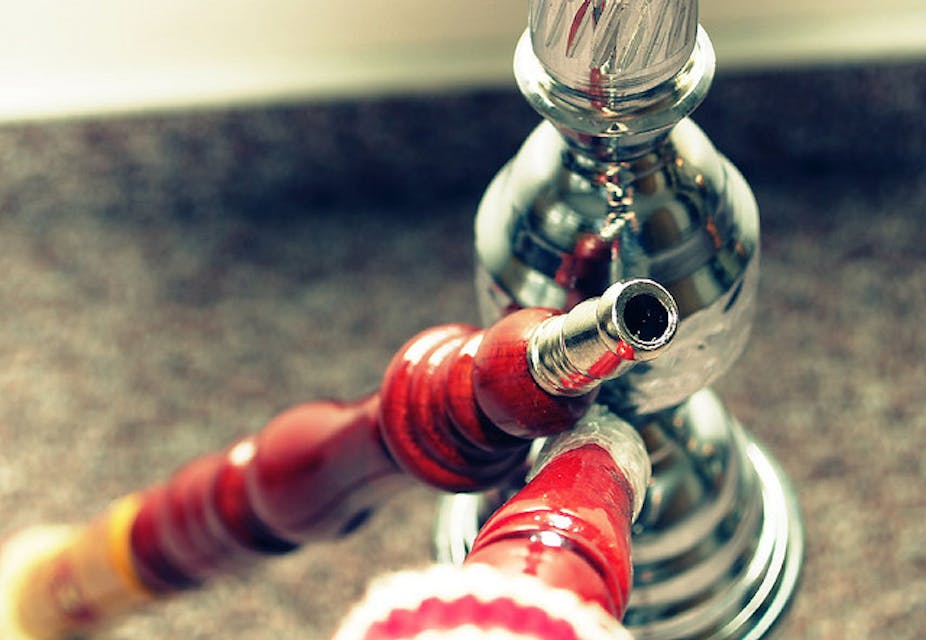After decades of successful anti-tobacco campaigns, we’re all familiar with the risks of smoking. But how do the health harms of cigarettes compare with those of other smoking devices?
The hookah, also known as the shisha or waterpipe, is one such device dating back to sixteenth century Persia and India.
These days, the common form of hookah consists of a bowl where tobacco is placed and heated by a piece of charcoal, which sits on top.
The smoke produced goes down a tube and is passed through water before being inhaled through the mouthpiece of a hose or pipe. As the smoker inhales, air is drawn into the charcoal bowl, which helps the tobacco smoulder.
The water is meant to cool and filter the smoke.
The myth that smoking using a hookah is safer than smoking cigarettes is based on the false belief that the water filters dangerous chemicals out of the smoke before it’s inhaled through the mouth and into the lungs.
It was thought that water rendered the smoke harmless. But despite being passed through water, the smoke from the hookah contains similarly high levels of carcinogens, heavy metals and carbon monoxide that are found in cigarette smoke.
Although some nicotine may be absorbed by the water, the hookah smoker is still inhaling sufficient quantities to cause addiction.
And any decrease in nicotine consumption that comes with smoking a hookah over a cigarette may simply result in the user smoking more and therefore being exposed to higher levels of cancer-causing chemicals.
In fact, hookah smoking is actually likely to be more dangerous than cigarette smoking because it’s commonly associated with more frequent puffing, deeper inhalation and longer smoking sessions.
Each hookah session typically lasts over 40 minutes, during which the smoke is inhaled 50 to 200 times.
Over a one-hour session, this would equate to the smoker inhaling 100 to 200 times the amount of smoke inhaled from a single cigarette.
Further, hookahs are often smoked by groups in cafes and restaurants where the mouthpiece is shared. This raises the possibility of transmitting infectious diseases such as hepatitis or [tuberculosis](http://www.betterhealth.vic.gov.au/bhcv2/bhcarticles.nsf/pages/Tuberculosis_(TB).
Not only can the social context of this type of smoking attract young smokers, who wouldn’t otherwise be attracted to cigarettes, but additives mixed with the tobacco may give the smoke more appealing smells and flavours.
Unfortunately, the inhalation of second-hand smoke is also more of a problem where hookahs are used because not only does the smoke contain cancer-causing chemicals from the tobacco but it also mixes with the smoke from the charcoal being used to burn the tobacco.
The disease outcomes from smoking hookahs are the same as with cigarette smoking, which increases your risk of developing a range of cancers including those of the mouth and head and neck, lung, bladder and stomach, along with chronic lung disease, cardiovascular disease, decreased fertility and for women who smoke during pregnancy, babies with a low birth weight.
More research is needed to investigate the prevalence of smoking hookahs, along with the health consequences and how best to manage addiction in this setting.
But it’s already clear that hookahs require regulation and health warnings like any other smoking device.
By no means in this a safe form of smoking so we can definitely lay this myth to rest.

